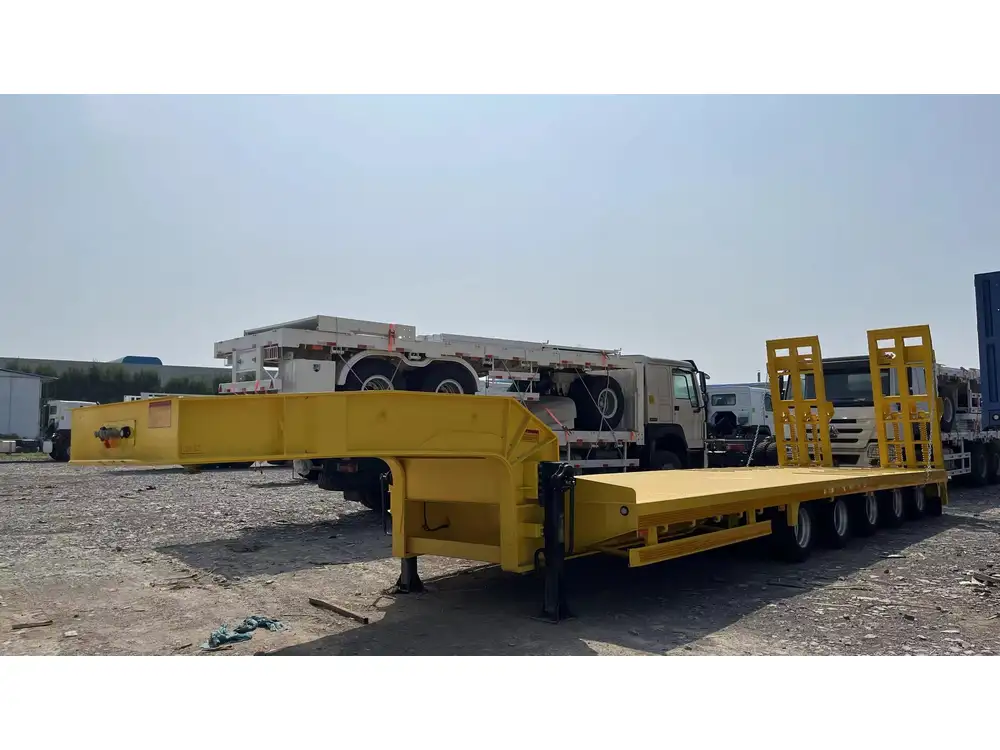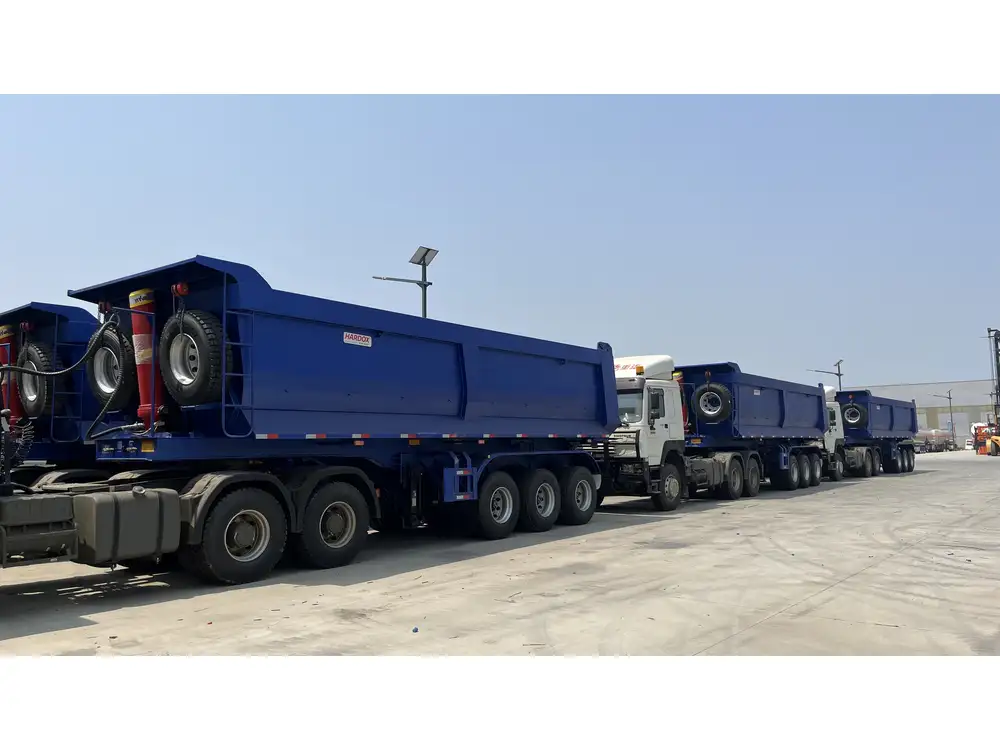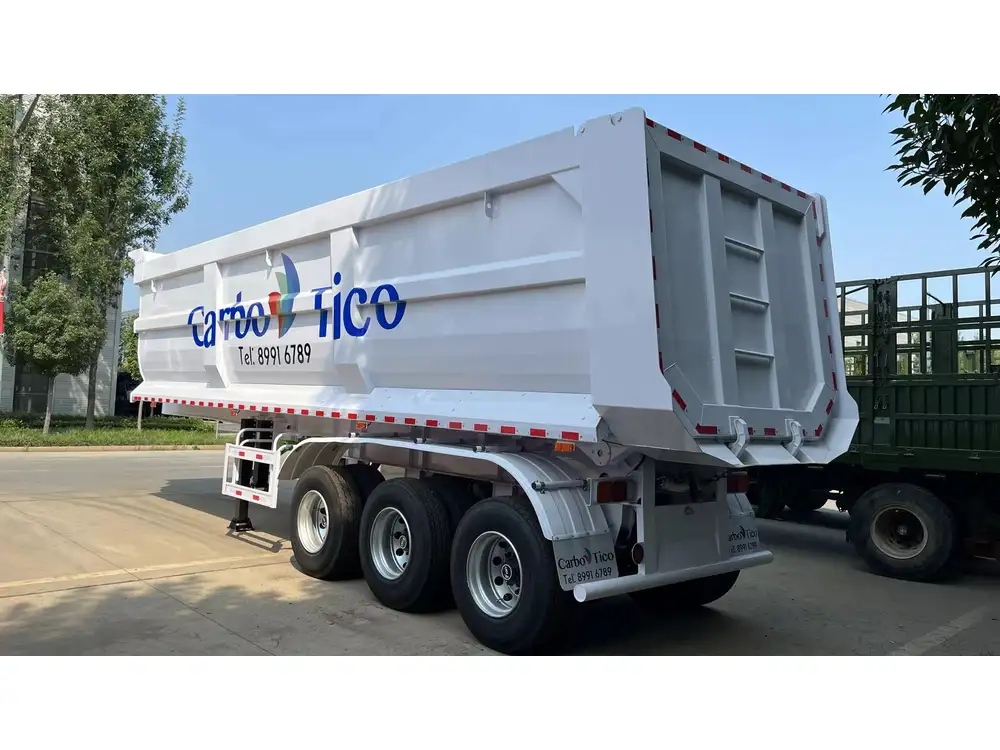Transporting liquefied petroleum (LP) tanks safely and efficiently is a crucial concern for operators using wedge nose trailers. Understanding the optimal positioning of these tanks can enhance safety, improve stability, and ensure compliance with transportation regulations. This article aims to provide in-depth knowledge and practical guidance on where to carry LP tanks on wedge nose trailers, focusing on safety protocols, weight distribution, and regulatory requirements.
Understanding Wedge Nose Trailers
Wedge nose trailers, characterized by their aerodynamic tapering at the front and unique design, are primarily used to improve fuel efficiency during transport. Their structure aids in reducing drag and enhances maneuverability. However, transporting LP tanks on wedge nose trailers requires special considerations due to the potential hazards associated with carrying pressurized gas.
Key Features of Wedge Nose Trailers
| Feature | Description |
|---|---|
| Aerodynamic Design | Reduces air resistance and improves fuel efficiency. |
| Lightweight Structure | Made with advanced materials, facilitating higher payload capacity. |
| Enhanced Stability | Helps with vehicle stability compared to traditional trailers. |
Understanding these features is essential for ensuring the effective and safe transport of LP tanks.

Regulations for Transporting LP Tanks
Understanding Federal and State Guidelines
Transporting LP tanks involves navigating a complex web of regulations, both at the federal and state levels. The U.S. Department of Transportation (DOT) and the Pipeline and Hazardous Materials Safety Administration (PHMSA) outline specific guidelines that govern the transport of hazardous materials.
- DOT Regulations: Ensure all LP tanks are properly labeled and marked according to DOT standards. This includes hazard communication standards (HCS).
- Weight Limits: Each state has specific weight limits for trailers. Adhering to these limits is critical to ensuring safety and compliance.
- Secure Loading: Tanks must be secured with appropriate straps or chains to prevent movement during transit.
Necessary Documentation
- Bill of Lading: A crucial document detailing the contents of the trailer, including the type and quantity of LP gas.
- Emergency Response Guidebook: Carriers must have this on board to address any emergencies involving LP gas.

Best Practices for Positioning LP Tanks on Wedge Nose Trailers
Ideal Location for LP Tanks
Knowing how to position LP tanks on a wedge nose trailer is paramount for safety and efficiency. There are strategic locations on the trailer to consider:
- Front of the Trailer: The area closest to the towing vehicle. This spot helps in maintaining a lower center of gravity, enhancing stability.
- Near the Axles: Positioning tanks centrally over the axles balances weight distribution, which can reduce wear on tires and improve handling.
- Outboard from Centerline: For additional stability, placing LP tanks slightly to the sides can minimize the risk of tipping.
Weight Distribution and Center of Gravity
Achieving the correct weight distribution is essential for mitigating the risks of rollover and improving trailer handling. The following table outlines optimal weight distribution strategies:
| Positioning | Effect on Stability | Recommendation |
|---|---|---|
| Front, near the coupler | Lowers center of gravity, improves stability | Preferred for lighter tanks |
| Centered over the axles | Balances trailer, reduces strain on tires | Ideal for medium to heavy loads |
| Slightly outboard from center | Enhances stability while turning, counteracts tilt | Good for dynamic driving conditions |

Safety Precautions
- Proper Securing: Utilize ratchet straps designed for hazardous materials to secure LP tanks effectively.
- Regular Inspections: Before every trip, inspect tanks for leaks, damages, or loose fittings.
- Emergency Setup: In the case of an accident or leak, carry appropriate containment tools and fire extinguishers onboard.
Loading and Unloading LP Tanks Safely
Loading and unloading LP tanks requires special techniques and appropriate equipment. Observing the following guidelines ensures minimal risk during these critical operations.
Loading Techniques
- Use Proper Equipment: Hoists or forklifts designed for hazardous materials simplify this process significantly.
- Follow a Systematic Process: Always load the heaviest tanks first to ensure a low center of gravity.
- Maintain Ventilation: Ensure loading areas are well-ventilated to disperse any potential leaks.

Unloading Procedures
- Prepare the Area: Ensure no ignition sources are present near the unloading area.
- Stand Clear During Movement: Always maintain a safe distance from lifting equipment or personnel involved in unloading.
- Check for Leaks: Immediately inspect tanks for gas leaks upon unloading.
Emergency Response Recommendations
Despite best efforts, emergencies can occur during the transportation of LP tanks. Being prepared with a solid emergency response plan can save lives and resources.
Potential Emergencies Involving LP Tanks
| Scenario | Emergency Response |
|---|---|
| Leak or Spill | Evacuate the area, notify authorities, and secure a safe perimeter. Use absorbents if trained. |
| Tank Overheating | Move away from the tank and allow it to cool down while notifying emergency services. |
| Fire | Use a dry chemical fire extinguisher specifically rated for flammable gases and notify local firefighters immediately. |

Training for Personnel
Training should be mandatory for all personnel involved in the loading, transport, and unloading of LP tanks. Focus areas include:
- Hazardous Material Handling: Understanding the risks associated with LP gases.
- Emergency Procedures: Knowledge of the appropriate response to various emergencies.
- Equipment Operation: Proper training on using loading and unloading equipment safely.
Conclusion
Transporting LP tanks on wedge nose trailers requires thorough knowledge of regulations, safety protocols, and effective strategies for positioning and securing the tanks. Following the guidelines outlined in this article will enhance the safety and efficiency of your operations, ensuring compliance with regulations while minimizing risks. Consistent training and awareness of emergency procedures can further safeguard personnel and assets during transport.
Investing in proper practices not only protects your business from legal and financial repercussions but also promotes a culture of safety and responsibility within your organization. As you navigate the complexities of transporting hazardous materials, remember that knowledge is your most important asset. Whether you are a seasoned transporter or new to the industry, adhering to these principles will pave the way for safer, more effective transportation of LP tanks.



